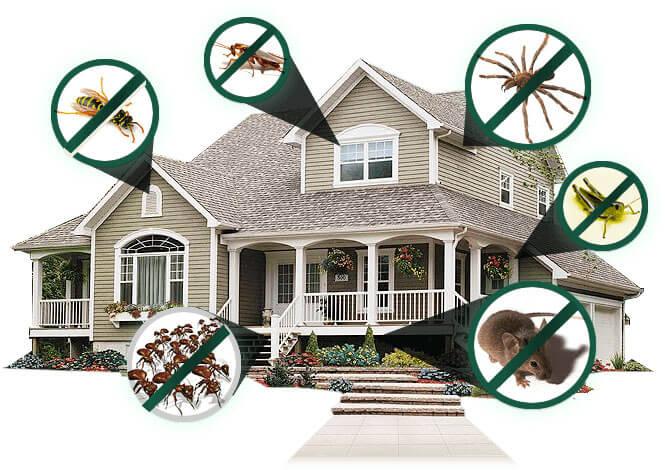A1 Bed Bug Exterminator Charlotte - Specialized Bed Bug Elimination
A1 Bed Bug Exterminator Charlotte - Specialized Bed Bug Elimination
Blog Article
Bed Insect Treatment Breakdown: Comparing Chemical Vs. Non-Chemical Solutions
In the world of bug control, especially when dealing with the consistent concern of bed pests, the choice between chemical and non-chemical treatment solutions can be an essential one. Both approaches supply distinctive advantages and drawbacks, influencing aspects such as performance, safety factors to consider, and overall expense. By checking out the nuanced details of each approach, a more clear understanding of which path to go after in dealing with a bed bug infestation can be achieved.
Efficiency of Chemical Treatments
Chemical therapies for bed pest infestations have actually been commonly recognized for their potent and rapid efficiency in eliminating these bugs. When taking into consideration the performance of chemical therapies, it is important to recognize that they can give a fast and comprehensive service to a bed bug trouble.
Moreover, chemical therapies have the advantage of offering recurring effects, suggesting that they can proceed to eliminate bed insects even after the preliminary application. This residual activity is particularly valuable in combating any potential re-infestations. Furthermore, the quick action of chemical therapies can bring relief to people encountering extreme bed pest infestations, permitting them to regain control of their home promptly.
Security Problems With Chemical Solutions
One critical facet that requires mindful factor to consider when making use of chemical remedies for bed pest therapy is making certain the safety and security of occupants and the environment. While chemical therapies can be effective in getting rid of bed pests, they might position risks if not handled appropriately. Among the key safety and security worry about chemical options is the possible harm they can cause to human health. Exposure to particular chemicals made use of in bed pest treatments can bring about breathing concerns, skin irritability, or other damaging responses, particularly in individuals with pre-existing conditions or sensitivities. In addition, inappropriate application or dose of chemical pesticides can result in hazardous deposits sticking around in the cured location, posing long-term wellness dangers to passengers.
Furthermore, the ecological effect of chemical options is another substantial consideration. Some pesticides used in bed pest treatments may be dangerous to advantageous insects, wild animals, and ecosystems if they seep into the dirt or water systems. It is necessary to utilize chemical therapies deliberately, adhering to safety and security standards, and taking into consideration much less hazardous options to mitigate these threats and make certain the efficient and secure management of bed pest infestations.
Benefits of Non-Chemical Strategies
Thinking about the possible security problems and environmental influence find more associated with chemical remedies for bed insect therapy, discovering non-chemical techniques presents a promising choice with a number of distinct benefits. Non-chemical treatments are eco pleasant, as they do not contribute to air or water contamination, making them a lasting option for insect control.
In addition, non-chemical solutions can be efficient in targeting bed pests, including hard-to-reach areas where chemical treatments might not penetrate - A1 bed bug exterminator charlotte. Methods such as warm therapy, vacuuming, heavy steam cleaning, and mattress encasements offer thorough removal without the use of damaging chemicals.
Limitations of Non-Chemical Treatments

Additionally, non-chemical therapies usually require several applications to attain effective removal. This can be time-consuming and may not always assure total removal of all bed bugs and their eggs, especially in hard-to-reach or surprise places.
In addition, the success of non-chemical therapies heavily depends on proper implementation and thoroughness, which can be challenging for individuals without expert knowledge. Insufficient application of non-chemical approaches may cause incomplete removal, bring about persistent infestations and the demand navigate to this site for extra therapies.
For that reason, while non-chemical treatments have their benefits, it is important to acknowledge these limitations and consider them when identifying the most reliable approach for handling bed insect infestations.
Price Comparison: Chemical Vs. Non-Chemical Options
Given the constraints linked with non-chemical therapies, an important element to evaluate in the context of bed pest monitoring is the expense comparison in between chemical and non-chemical alternatives. In contrast, non-chemical therapies like warm therapy or steam can be extra costly, with costs varying from $1,000 to $6,000 for an entire home. While the preliminary expense of chemical therapies might seem reduced, multiple therapies may be called for to fully get rid of the invasion, possibly enhancing the total expense.
Conclusion

Thinking about the possible safety and security problems and environmental effect linked with chemical services for bed pest therapy, exploring non-chemical methods presents a promising other choice with several distinct benefits.Given the restrictions associated with non-chemical treatments, an essential facet to examine in the context of bed pest management is the cost comparison between chemical and non-chemical choices. In contrast, non-chemical therapies like warmth treatment or steam can be much more expensive, with expenses ranging from $1,000 to $6,000 for a whole home. While the first cost of chemical treatments may seem reduced, multiple treatments might be called for to completely eliminate the invasion, possibly increasing the total cost.In final thought, when contrasting chemical and non-chemical bed bug therapy options, it is important to think about efficiency, safety and security, benefits, constraints, and expense.
Report this page